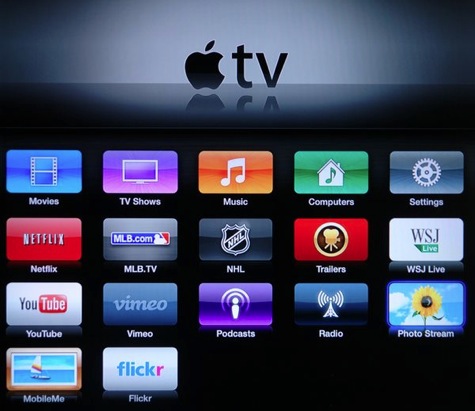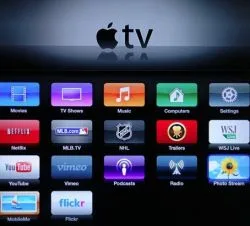We have an emphasis on public displays this week as this has been “Digital Signage Week” in London. Tom got along to the summit on Tuesday and I was at NEC on Wednesday. We’ve got the reports done and they are in this week’s LDM issue.
One of the stories that caught my eye this week is the news from the WSJ that Apple has abandoned its development of a TV set. This topic has been a long running one for us (we first talked about a full Apple TV set in 2009) and a few years ago, I created a presentation that looked at the topic. It had a slide with “10 good reasons why Apple should get into TV” and “10 good reasons why Apple shouldn’t get into TV”. I could present the same slides today.
Now, many of the reasons why Apple should have avoided the market (low or no profits, commodity hardware, fierce competition etc) also applied to the phone market when the firm entered it. However, Apple changed the market by transforming the user experience, as it previously had done in the MP3 digital music space. Steve Jobs famously said that he had worked out how to do this for TV, but we wrote at the time when he said this in his book, that this might just be a last joke at the expense of the TV makers!
It always seemed to me that there were two big problems for Apple to overcome if it really wanted to succeed in TV. First, and most critically, there is the question of content. TV viewers want the content that they love and without the content, the user experience is not enough. I would not buy an Apple TV if it couldn’t show the soccer that I want to watch, especially live matches of my team, without the need for a separate box. My wife wants her soaps.
Having seen what Apple did in taking a huge share of the value of the digital music market, TV content providers have not been keen to do anything that would make Apple unique. Although there has been lots of talk of companies doing deals with Apple over the last year, there have also been deals with Netflix et al. Apple has little or no chance of building the kind of dominance that it achieved with iTunes.
The second problem for Apple is that the upgrade cycle for TVs is much slower than for mobile devices. Although consumers upgrade their TVs sooner these days than they did in the days of CRTs, the cycle is still of the order of seven or eight years, rather than the two years of mobile devices. That makes it very hard to deliver a user experience that remains compelling over the life of the set. As I’m fond of saying “Your Smart TV becomes your stupid TV two years later”. Samsung has addressed this with its upgrade module concept, but we haven’t seen any data on how many of these are actually bought – we suspect it is not many.

A good and simple to use user interface was not enough – if it had been then the Apple TV STB would have been much more successful than it has been. When the Apple TV box was launched in 2007, it had a much better interface than any of the then current TVs (our evaluation sample disappeared to our then Editor’s home for ‘testing’ and never returned!). The Apple TV box could also not supply premiership soccer.
Finally, Apple has often turned technology improvements and features from its supply chain (cheap flash for the iPod, procap touch for the iPhone etc) into compelling features in its sets. The obvious area for Apple to look at in TV was the display, and the only potential “game changer” in recent years has been the arrival of OLED. However, OLED as a TV display has always looked a high risk strategy, so it’s no surprise that Apple stayed away. Apple acquired Luxvue last year, which has micro LED displays, but that looks more important for watches than for TVs at the moment.
Of course, Apple has long mastered the control of information to confuse its competitors, so treat all “news” as tentative!
Bob


